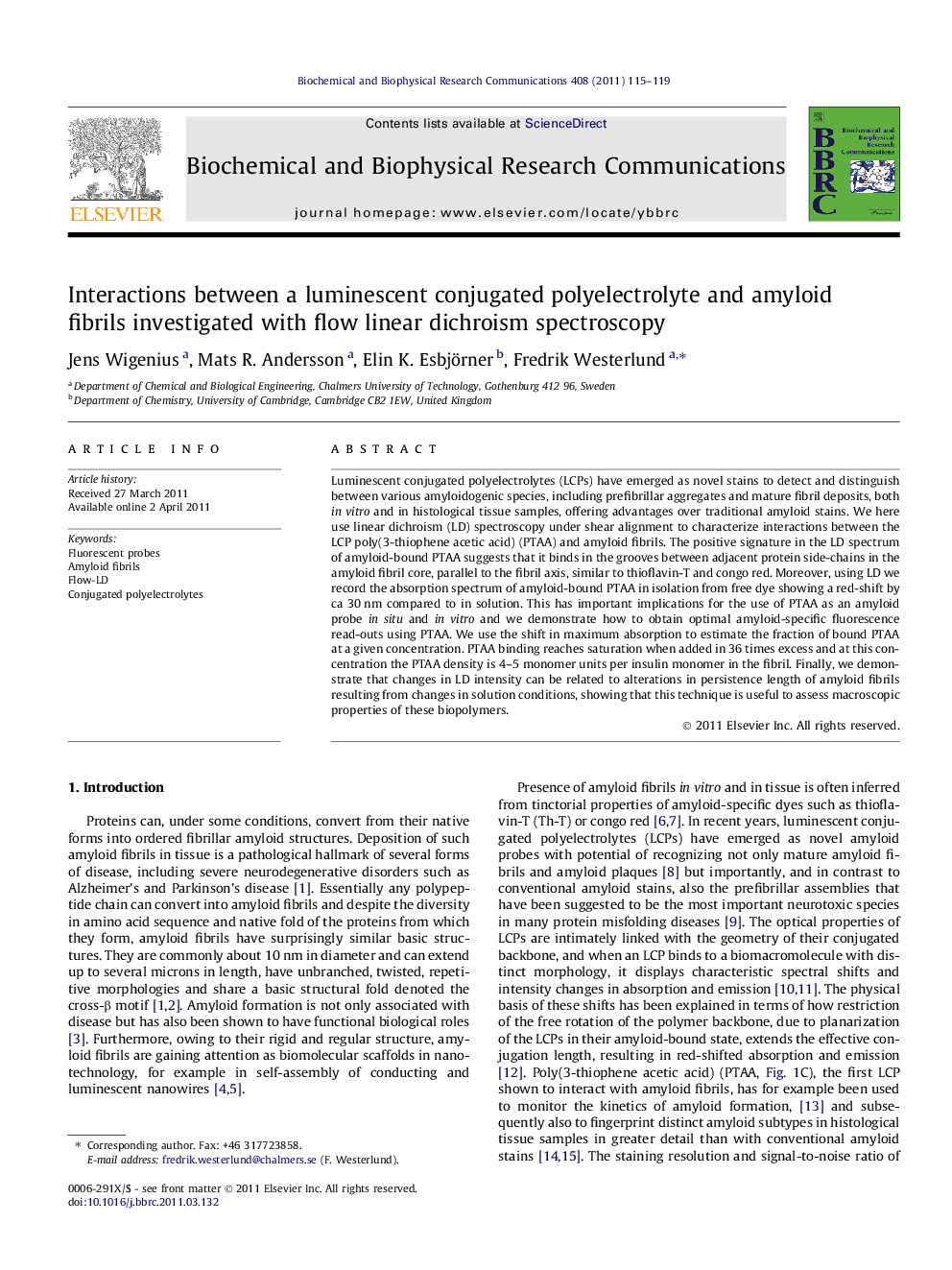| Article ID | Journal | Published Year | Pages | File Type |
|---|---|---|---|---|
| 1930755 | Biochemical and Biophysical Research Communications | 2011 | 5 Pages |
Luminescent conjugated polyelectrolytes (LCPs) have emerged as novel stains to detect and distinguish between various amyloidogenic species, including prefibrillar aggregates and mature fibril deposits, both in vitro and in histological tissue samples, offering advantages over traditional amyloid stains. We here use linear dichroism (LD) spectroscopy under shear alignment to characterize interactions between the LCP poly(3-thiophene acetic acid) (PTAA) and amyloid fibrils. The positive signature in the LD spectrum of amyloid-bound PTAA suggests that it binds in the grooves between adjacent protein side-chains in the amyloid fibril core, parallel to the fibril axis, similar to thioflavin-T and congo red. Moreover, using LD we record the absorption spectrum of amyloid-bound PTAA in isolation from free dye showing a red-shift by ca 30 nm compared to in solution. This has important implications for the use of PTAA as an amyloid probe in situ and in vitro and we demonstrate how to obtain optimal amyloid-specific fluorescence read-outs using PTAA. We use the shift in maximum absorption to estimate the fraction of bound PTAA at a given concentration. PTAA binding reaches saturation when added in 36 times excess and at this concentration the PTAA density is 4–5 monomer units per insulin monomer in the fibril. Finally, we demonstrate that changes in LD intensity can be related to alterations in persistence length of amyloid fibrils resulting from changes in solution conditions, showing that this technique is useful to assess macroscopic properties of these biopolymers.
► Novel insights into PTAA:amyloid interactions using flow aligned linear dichroism. ► Characterizing amyloid-bound PTAA without interference from unbound polymer. ► Use LD spectra to estimate the bound PTAA fraction in a simple and reliable way. ► Detect changes in amyloid fibril persistence length when pH or PTAA loading varies. ► Increase resolution in fluorescence applications by optimized excitation wavelength.
